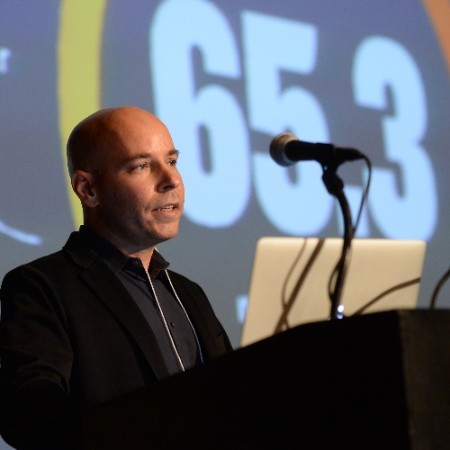
Amazon announced earlier this week that its Dash buttons are available now for all of its Amazon Prime members. For $4.99, members can buy a button connected to a specific brand and use it to reorder products of that brand. The Dash mantra is as simple as the service: Just press and never run out.
Sounds cool, right? Well, I have to admit it is. Wouldn’t it be nice to have a Cottonelle button attached to the shelf where I store the toilet paper at home and click it every time we’re almost out of stock, so the next day a new pack will miraculously wait for me in front of the door? The only thing that could be even cooler is if the shelf could talk directly with Amazon and save me the trouble of clicking a button or the responsibility of checking from time to time to see if we’re out of toilet paper.
But before you start daydreaming of an effortless future, where smart devices make your life so much easier, I’d like you to ask yourself – is this utopia or dystopia? I’d like to make the case here that, when it comes to sustainability, the Amazon Dash gets us one step closer to the latter rather than to the former.
The point I’d like to make is the following: Dash buttons are probably the first iteration of a future we’ll see in a few years, dominated by billions of smart devices using wireless technology to talk to each other and to us, aka the Internet of Things (IoT). Now, while IoT applications like the Dash buttons could make our lives easier, they could also take the thinking, not just the friction, out of our consumption experience as well as replicate the status quo. Both of these effects are unsustainable.
Let me start with the second effect. If the idea behind the buttons is to make reordering easier, it also means that I will probably continue to use in the future the same household brands I’m using today. So, if I use for example Tide laundry detergent, I’ll buy the Tide button and will probably continue to use Tide in the foreseeable future.
This perpetuation of the status quo is unsustainable due to the simple fact that the majority of the household items consumed today are not sustainable. In other words: If today let’s say around 90 percent of what we consume in the house is unsustainable, then with the ‘help’ of the buttons, this unsustainable/sustainable ratio of 90/10 will be kept for years.
The other issue is that, while IoT objects like the Dash button (as well as the Dash barcode scanner) make consumption more seamless, they also make it more thoughtless. Making consumption an automated process -- where eventually our refrigerator, washing machine and bathroom will communicate directly, without any human intervention with Amazon or other retailers to fulfill our needs -- could decrease the chances that we’ll act in a thoughtful way and make sustainable choices. When effortless process becomes the default, then any effort to change our consumption habits (for example, making it more sustainable) becomes even more difficult, and therefore less likely to happen.
What does it mean then?
First, let’s be clear – this is not just about IoT. Dash buttons are just one of many examples of a trend Mary Meeker calls in her 2015 annual trends report ‘Just-in-Time’ products and services enabled by mobiles + sensors + humans, which is about fulfilling our needs seamlessly, conveniently and quickly. Other examples include many on-demand services like Instacart, Shyp, Munchery and, of course, Uber. Second, this trend is not going anywhere – as Mary Meeker writes in her report, consumers’ expectation that they can get what they want with ease and speed will continue to rise.
It also means that it’s time to discuss IoT future scenarios in a more realistic way and understand that with all of its benefits (i.e. enhanced energy efficiency accompanied by productivity gains, reduction in resource use), it could also have negative effects when it comes to advancing sustainability. Therefore, IoT might not necessarily, as Jeremy Rifkin claims, prepare the way for a sustainable circular economy, but it could actually help perpetuate unsustainable consumption patterns.
Last but not least, my guestimation is that the Dash buttons (and probably even more the next generations to follow) could reduce consumers’ agency and increase our dependency on the willingness of mainstream brands like to Tide, Clorox, Bounty, Glad and others to take sustainability more seriously. The bad news is that the annual BSR/GlobeScan State of Sustainable Business Survey shows that sustainable consumption is one of the lowest priorities among current corporate social responsibility (CSR) professionals (only higher than poverty reduction). The good news is that among Net Impact members (i.e. future CSR professionals) this is the No. 1 priority.
The bottom line is that it’s time to start injecting sustainability into the conversation about the Dash buttons, not to make us feel guilty or wonder about the pros and cons of technology, but in order to think about our real challenge – how to meet customers’ expectations for ease and speed in a sustainable way.
Image credit: Amazon

Raz Godelnik is an Assistant Professor and the Co-Director of the MS in Strategic Design & Management program at Parsons School of Design in New York. Currently, his research projects focus on the impact of the sharing economy on traditional business, the sharing economy and cities’ resilience, the future of design thinking, and the integration of sustainability into Millennials’ lifestyles. Raz is the co-founder of two green startups – Hemper Jeans and Eco-Libris and holds an MBA from Tel Aviv University.














